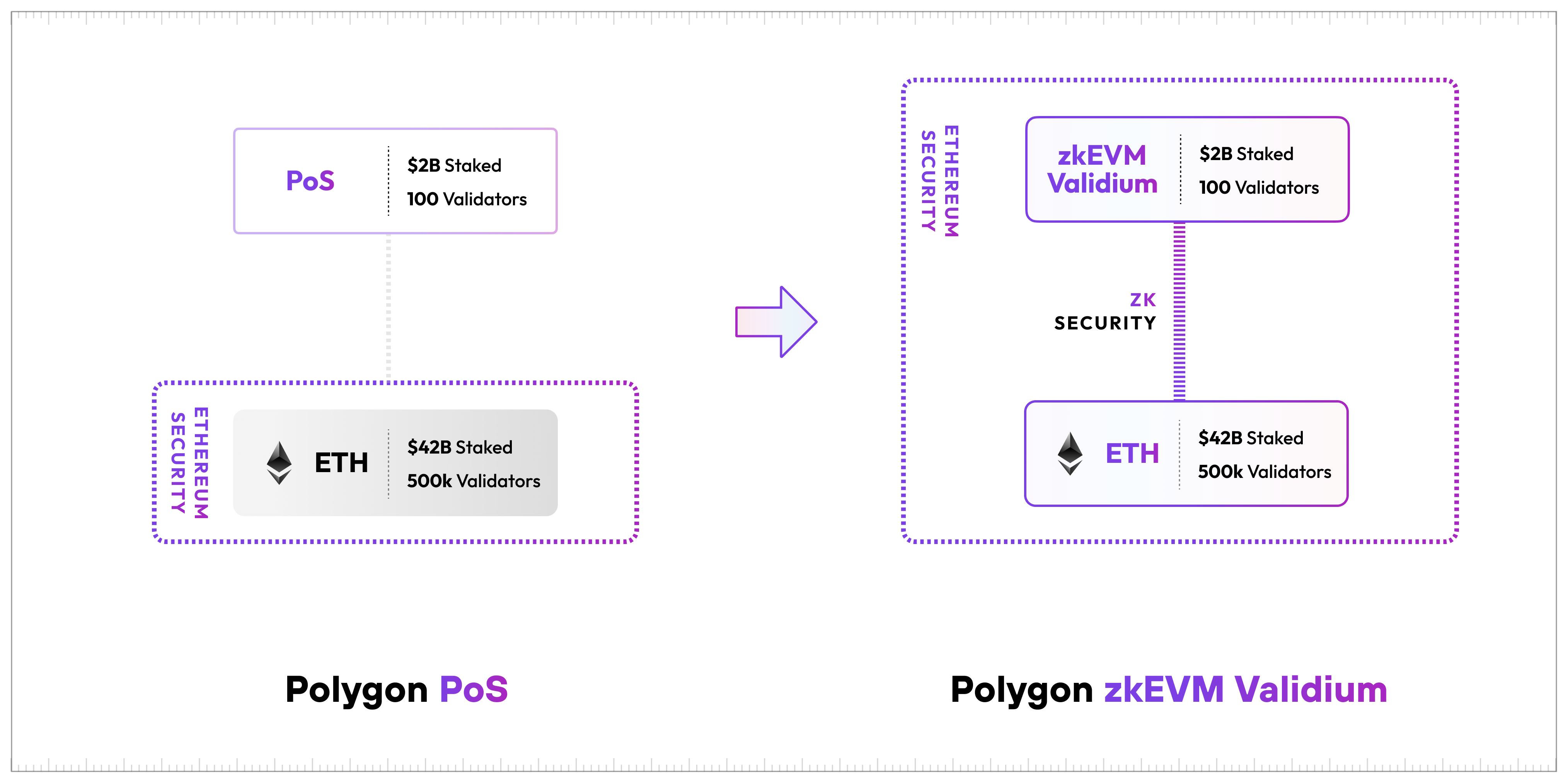Mihailo Bjelic, the co-founder of Polygon, recently got one Suggestion to transform the current Polygon Proof of Stake (PoS) blockchain into a zkEVM-Validium Ethereum Layer 2 blockchain. Put simply, he wants to fundamentally innovate the technology behind the current Polygon PoS blockchain. Disney, Reddit, Nike, Starbucks and many other major players are currently building their projects on the Polygon PoS chain.
The conversion is intended to make Polygon’s ecosystem safer, cheaper and, above all, faster in the long term. The upgrade is to go live in the first quarter of 2024.
read too
The planned upgrade to a true Ethereum Layer 2 network sheds light on an all too seldom discussed debate in the crypto community: the difference between sidechains and Layer 2 networks. But why is this so important? What is behind the Polygon co-founder’s proposal? And what are the consequences of the upgrade for the MATIC token?
Sidechain vs. Layer 2 Network: A Fundamental Difference
The current structure of Polygon works as a sidechain to Ethereum. A sidechain is a standalone blockchain that runs parallel to the mainchain, in this case Ethereum. It has its own consensus mechanism, Proof of Stake in Polygon’s case, and offers scalability by processing transactions that do not burden the Ethereum mainchain. But it has one major disadvantage: the security of the sidechain depends on its own network and participants, not on the security of the Ethereum blockchain.
An Ethereum Layer 2 network, on the other hand, such as the networks from Optimism, Arbitrum and Co., builds on the security of Ethereum. Although transactions are processed off-chain to allow for scalability, they are ultimately secured by Ethereum’s security infrastructure. This means Layer 2 solutions benefit from the well-established and robust security of the Ethereum blockchain. You therefore do not have to set up a secure network with a corresponding consensus mechanism yourself, but can outsource this to the Ethereum main chain. In return, however, they pay a certain amount of fees to the Ethereum main chain for every transaction. The bottom line, however, is that L2s still save considerable costs compared to layer 1 blockchains or sidechains.
Why does Polygon want to do this transformation?
Polygon plans to address the criticism of its current position as a sidechain and close the security gap by becoming a true Ethereum L2. This move is intended not only to improve security and trust in Polygon, but also to take the entire Polygon ecosystem to the next level. In his proposal, the Polygon co-founder outlines a comprehensive vision for the future of Polygon, which clearly differs from competitors such as Arbitrum and Co.
The vision of Polygon 2.0: A network of different Layer 2s
His vision of Polygon 2.0 is an ecosystem of Layer 2 scaling solutions, all based on zero-knowledge (ZK) technology. The aim is to create different Layer 2 solutions that are specialized for different possible applications and are all able to communicate with each other. Switching from PoS to zkEVM-Validium is an important step towards realizing this vision.

The transition to a true Layer 2 network requires a significant change in the underlying technology. Polygon needs to upgrade its existing PoS blockchain to a Switch zkEVM Validium blockchain.
Such a blockchain combines Zero Knowledge Proofs and Validium, an off-chain data storage solution, to improve scalability. At the same time, these two technologies allow Polygon to benefit from the security of the Ethereum mainchain. In contrast to Optimism or Arbitrum, Polygon does not plan to become an optimistic rollup network, but relies on zero-knowledge technology and Validium.
read too

Benefits of the transition and the role of the MATIC token
The move brings a number of benefits, including lower transaction costs, greater scalability, and stronger privacy guarantees thanks to ZK proofs.
The MATIC token, the native asset of the Polygon network, will continue to play a crucial role in this. It will continue to be used to pay transaction fees and participate in the PoS consensus mechanism. However, with the new infrastructure and improved efficiencies, the value and usage of the MATIC token could continue to grow. The prerequisite for this is, of course, that the upgrade is successful.
Overall, the move marks a significant step in Polygon’s history and demonstrates the project’s desire to be more integrated with the Ethereum ecosystem. Because especially in the past few months, the rise of Arbitrum, Optimism and Co. have shown that real Ethereum L2s are very popular with investors and developers.
read too

For comparison: While Arbitrum now has a Total Value Locked (TVL) of over US$2.18 billion, it is now only US$950 million on the Polygon PoS blockchain. Polygon’s plan to become a real ETH-L2 therefore seems to be a step aimed at preventing further market share from being lost to the competition.
The latest issues of BTC-ECHO Magazine
You might also be interested in this
